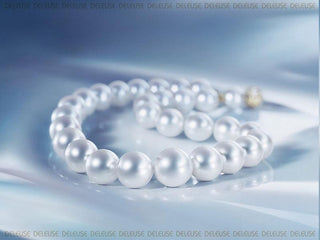
- Pearls are the only jewels created by a living animal. A natural pearl of value is found in less than 1 in every 10,000 wild oysters.
- All pearl oysters are born male and transform into females at around three years of age.
- There are three major types of saltwater cultured pearls: Akoya, Tahitian and South Sea. These pearls account for approximately 5% of the total weight of global pearl production. Although they share many of the same characteristics, they can look vastly different as each pearl is sourced from a different species of oyster. These oceanic oysters typically grow only one pearl at a time.
- Freshwater pearls account for approximately 95% of total global pearl production but are much less valuable than saltwater pearls. China produces the overwhelming majority of freshwater pearls in pearl farms that may range from a farmer's fishpond to massive lakes filled with over a million mussels. A single freshwater mussel will typically produce between 30 and 50 pearls at a time.
- Even with cultivation practices, South Sea pearls are incredibly rare. By way of comparison, the weight of diamond production each year is about 10 times greater than the weight of the annual Australian South Sea pearls harvest.
- Pearl oysters are also used for their shell (known as mother-of-pearl) and their meat.
- The earliest record we have of pearls as precious objects are artefacts from Mesopotamia dated to around 2300 B.C.
- Recently, a two thousand year old pearl was found in an Australian Aboriginal archaeological dig in the Kimberley region of Western Australia.
- La Peregrina (Spanish for ‘the incomparable’) is one of the most famous pearls in the world. The 500-year-old pearl is pear shaped and the size of a large pigeon’s egg. Its previous owners included a King of Spain, Napoleon Bonaparte and Elizabeth Taylor.
- In the early days, pearl divers regularly faced the threat of shark attacks as well as the dreaded crippling effects of the bends with every dive. In the late 19th Century and early 20th Century, the mortality rate for divers was as high as 50 per cent. Today, there are strict protocols and regulations regarding occupational diving to reduce these risks.
